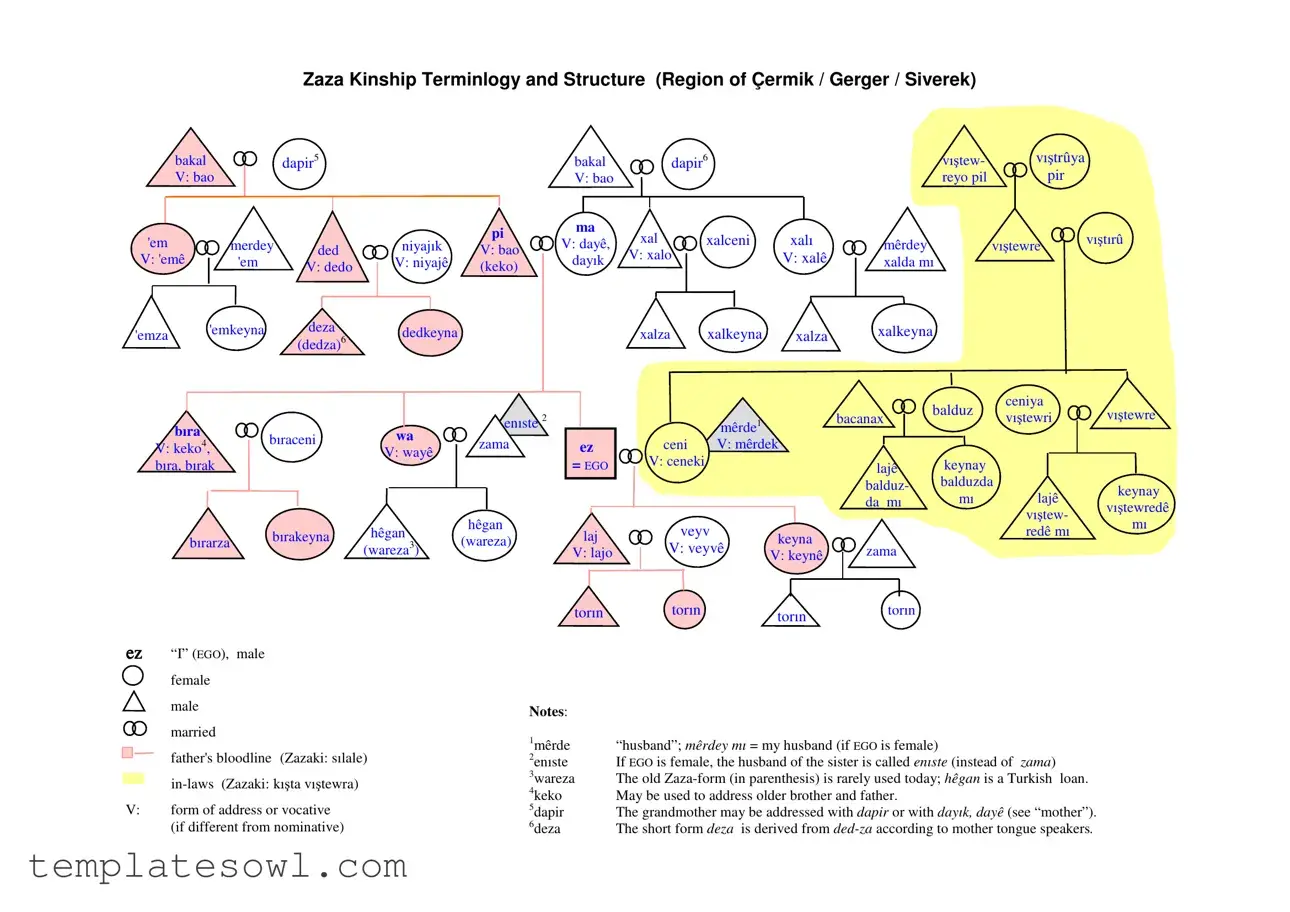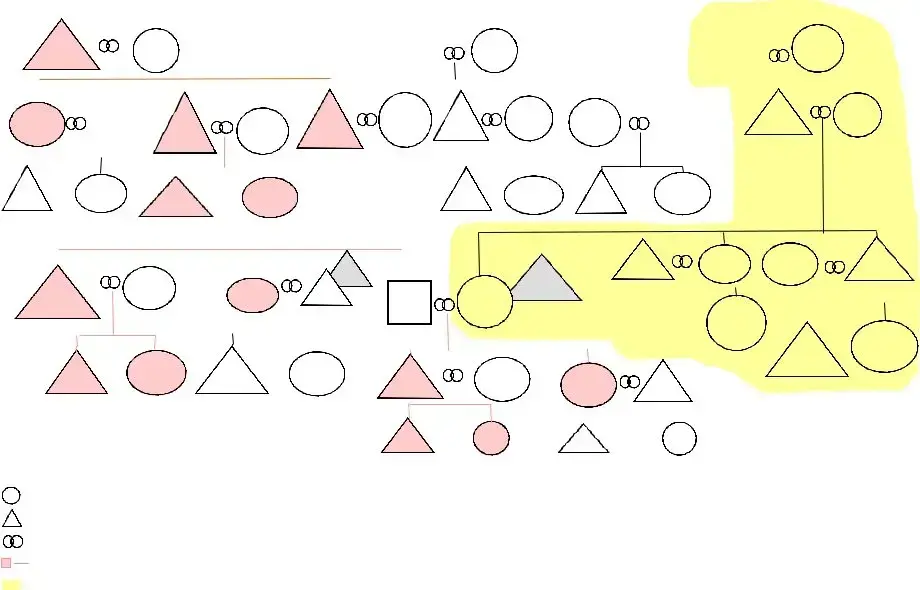What is the purpose of the Kinship Tree Diagram form?
The Kinship Tree Diagram form helps document familial relationships within Zaza culture, particularly in regions like Çermik, Gerger, and Siverek. This diagram visually represents how relatives are connected through bloodlines and marriage, providing insight into the social structure and cultural practices of the Zaza people.
How is kinship defined in Zaza society?
In Zaza society, kinship is defined patrilineally. This means that lineage is traced exclusively through the father's side. Mothers and their relatives are considered in-laws rather than blood relatives. A child born to a daughter, for instance, is viewed as belonging to the lineage of the daughter's husband, not the mother’s family.
What does 'EGO' mean in the context of the Kinship Tree Diagram?
'EGO' represents the individual from whose perspective the family relationships are being viewed. In the diagram and terminology, this person is central, and relationships are defined in relation to EGO. The term helps clarify the connections between various relatives and their respective titles.
Why is having male descendants significant in Zaza culture?
The birth of a male descendant is significant due to the belief that males continue the paternal lineage. Sons are viewed as essential for ensuring the continuation of the family's bloodline. This cultural emphasis on male offspring illustrates the deep-rooted values placed on lineage continuity.
What are the implications of marriage choices in Zaza society?
Marriage choices often revolve around endogamous and exogamous practices. Endogamous marriages, which occur within the same bloodline, help strengthen clan ties and retain a sense of lineage. On the other hand, exogamous marriages bring in diverse perspectives and can reduce conflict, as spouses belong to separate lineages.
How do in-laws fit into Zaza kinship structures?
In-laws are categorized separately from blood relatives in Zaza kinship structures. Known collectively as 'kıta vıtewra,' these relatives play an important role but do not participate in the direct lineage. This distinction simplifies relationship dynamics, as issues regarding in-laws do not affect one's blood relatives.
What terms are used to describe relatives in the Zaza Kinship Tree?
The terminology includes various specific words for relatives, such as 'mêrde' for husband and 'enıste' for the husband of a sister if EGO is female. Each term carries cultural significance and reflects the social norms and values regarding family and respect within the community.
Are maternal relatives considered in Zaza lineage?
Maternal relatives do not figure into Zaza lineage; rather, they are regarded as in-laws. This creates a clear division in understanding family roles. Such structure minimizes potential conflicts and clarifies responsibilities among family members.
How does the structure of the Zaza Kinship Tree impact family gatherings?
The clear structure of the Zaza Kinship Tree facilitates gatherings, as roles and relationships are well understood. Events can be organized efficiently, knowing how to address each relative according to their specific titles. This organization fosters a sense of belonging and community among family members.
What cultural practices stem from Zaza kinship structures?
Cultural practices like patrilocal residence, where the bride moves into the groom's home, arise from the kinship structure. Such practices further entrench the concept of patrilineality and reflect the values of Zaza society, while also shaping the daily lives and interactions of the community.


